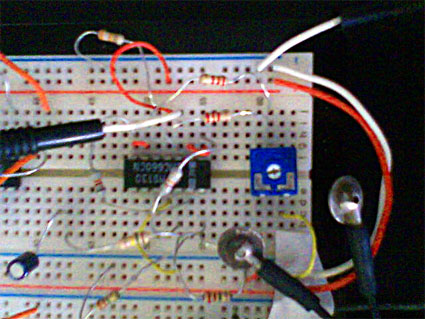Affective Devices
Contents
Part 1: project profile
Project name
Affective Devices
Project short description
The project is aimed at developing affective devices that are able to acquire biological signals in a way that is less invasive for the subject.
Dates
Start date: 2008/01/08
End date: 2008/08/08
Internet site(s)
People involved
Project heads
Other Politecnico di Milano people
Students
Students that have worked on the project
- Mattia Colombo (Blood Volume Pressure sensor)
- Alessia Cornaggia (Galvanic skin response sensor)
- Sala Mirko (Galvanic skin response sensor)
Laboratory work and risk analysis
Laboratory work for this project will be mainly performed at AIRLab/Lambrate. It will include electrical and electronic activity. Potentially risky activities are the following:
- Use of soldering iron. Standard safety measures described in Safety norms will be followed.
- Use of high-voltage circuits. Special gloves and a current limiter will be used.
- Robot testing. Standard safety measures described in Safety norms will be followed.
- Use of a modified (human-guided) golf cart. We will use the cart only in open-air environments.
Part 2: project description
The project is aimed at developing affective devices that are able to acquire biological signals in a way that is less invasive for the subject. The term invasive is related to how much the sensors we use compromise the normal interaction.
An affective device should be weared easily, should not have cables and should acquire as much sensors as possible. It is composed by:
- Blood Volume pressure (Mattia Colombo)
- Skin galvanic response (Sala Mirko e Alessia Cornaggia)
- Temperature
- Accelerometer
- Wireless comunication
* Skin galvanic response (Sala Mirko e Alessia Cornaggia) Galvanic skin response (GSR), also known as electrodermal response (EDR), psychogalvanic reflex (PGR), or skin conductance response (SCR), is a method of measuring the electrical resistance of the skin. There is a relationship between sympathetic activity and emotional arousal, although one cannot identify the specific emotion being elicited. The GSR is highly sensitive to emotions in some people. Fear, anger, startle response, orienting response and sexual feelings are all among the emotions which may produce similar GSR responses. Response of the skin to the passage of a small electric current. The ease with which the current flows between two points on the skin can be used to indicate stress. When a person is tense or emotional, the sweat glands become more active, increasing moisture on the skin; this allows the electric current to flow more readily. In the graphic below there is a sample GSR signal of 60 seconds. File:Grafico.jpg The response may also be used in relaxation training: information about the galvanic skin response is fed back aurally or visually to the subject who can, with practice, learn to increase or decrease sweating on the skin by learning to relax or tense muscles. We measure the galvanic skin response using two electrodes attached to the skin. The optimal placement is the palm of the hands, but we are experimenting other places like on the forehead. The circuit we are creating is the one below.
